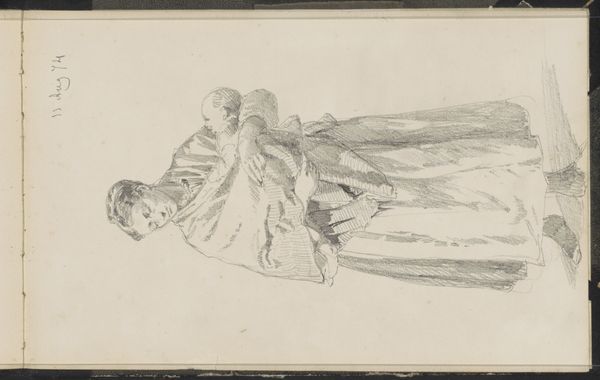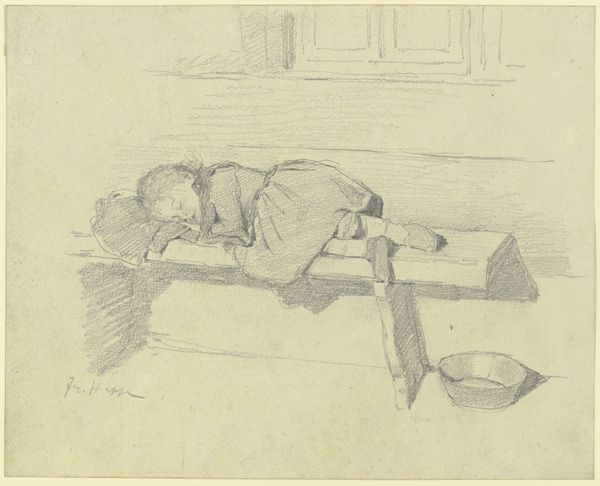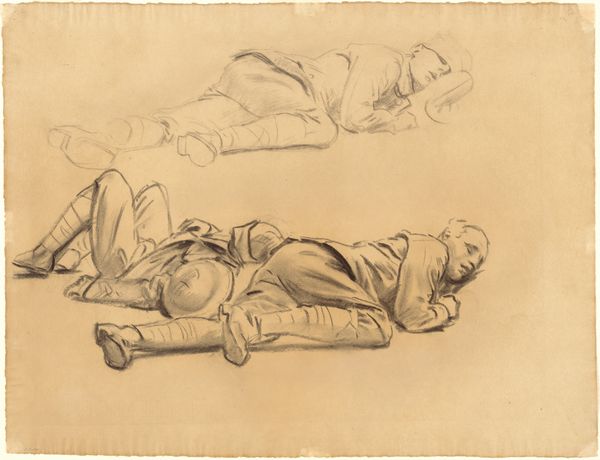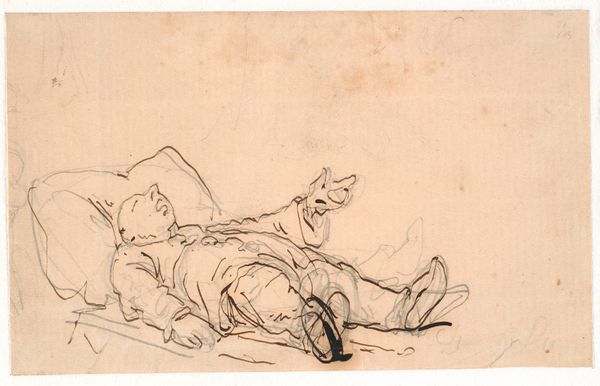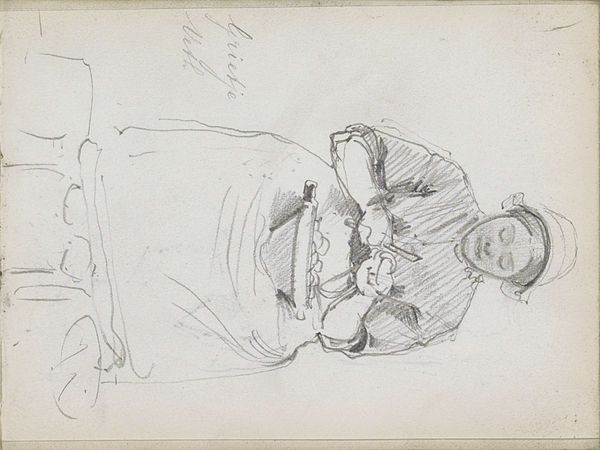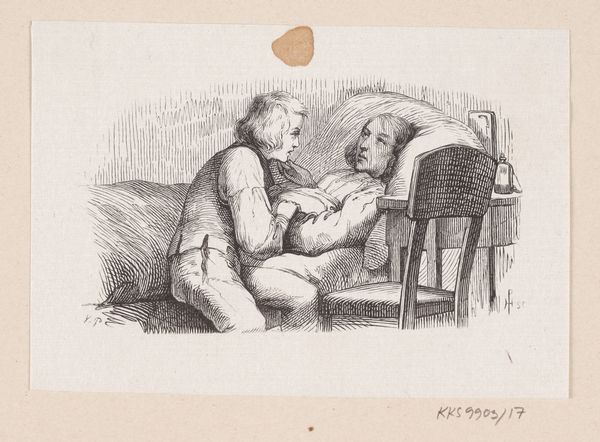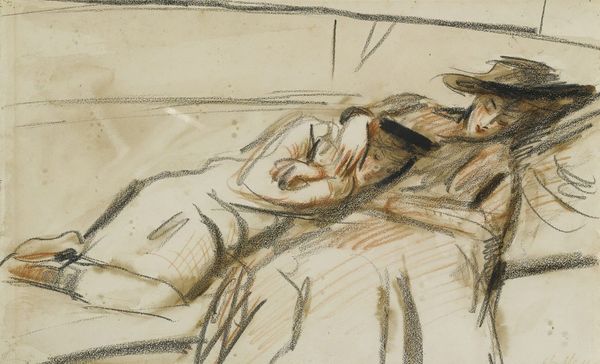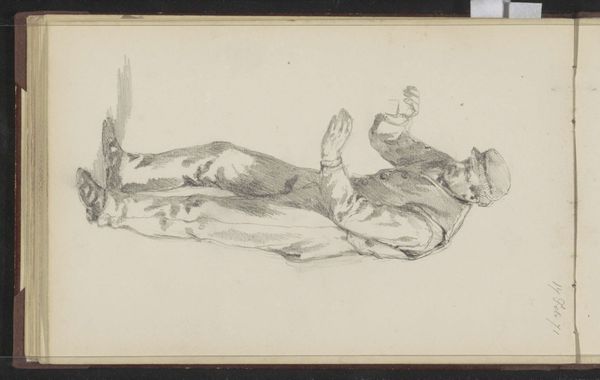
Copyright: Rijks Museum: Open Domain
Editor: This is "Slapend kind in het gras," or "Sleeping Child in the Grass," made in 1922 by Otto Verhagen, using pencil and watercolor on paper. There's something very intimate about these simple sketches; they almost feel like a secret glimpse into the artist's private life. What social commentary, if any, do you find present in these pieces? Curator: That's a perceptive reading. Given Verhagen’s time, the early 20th century, depictions of childhood often carried social weight. These weren’t merely innocent portrayals, but often invoked discussions around social welfare, education, and the romanticization – or critique – of bourgeois family life. Do you think that context changes how we perceive the scene today? Editor: Absolutely. Knowing that, I can't help but think about the politics of leisure and childhood. Is Verhagen showing us the ideal of a carefree childhood, accessible only to certain classes? Curator: Precisely. The setting – the grass, the implication of open space – further complicates this. It can evoke idyllic pastoral scenes, but also highlight the disparity between children who have access to nature and those confined to urban environments. Considering the prevalence of social reform movements at the time, images like these could function as both aspiration and critique. Who is being afforded these moments of peace? Editor: So, even what seems like a simple domestic scene can be read as participating in broader social debates about children's rights and access to leisure? Curator: Exactly! Artists of the period were keenly aware of the power of imagery to influence public opinion. The seemingly innocent image becomes a battleground for societal values. Editor: That’s amazing. I hadn't considered how an artist’s seemingly intimate work can reflect bigger cultural movements. It really emphasizes how deeply art is interwoven with politics, even on such an intimate level! Curator: Indeed. Hopefully, exploring Otto Verhagen’s "Slapend kind in het gras" through its historical lens gives new context to understanding the piece, and new insight into the impact social issues have on what would seem mundane imagery.
Comments
No comments
Be the first to comment and join the conversation on the ultimate creative platform.

